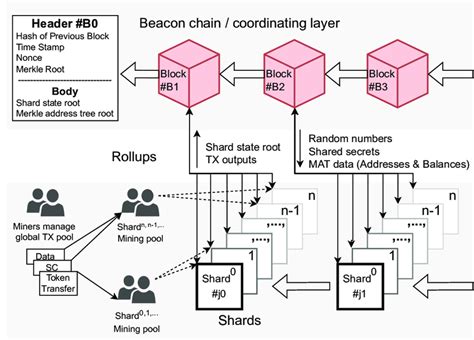Ethereum Layer 2 Solutions: A Beginner’s Guide to Developing with Solidity and Other Languages
As a new Ethereum developer, you’re probably eager to learn about the latest scaling solutions. One of the most exciting aspects is Layer 2 (L2) technologies, which enable faster and more efficient transactions while reducing traditional Ethereum overhead. In this article, we’ll take a look at two notable L2 solutions: Arbitrum, Optimism, and Zksync, with a focus on developing with Solidity and other programming languages.
What are Layer 2 Solutions?
Layer 2 solutions aim to increase the scalability and usability of Ethereum without compromising security. By offloading complex logic and computations from the blockchain’s main chain, these solutions can improve transaction processing times, reduce congestion, and improve the overall user experience.
Arbitrum: A Scalable L2 Solution
Arbitrum is one of the most popular Ethereum Layer 2 solutions. It was built by a team led by Mihai Alisie, a well-known developer in the Ethereum ecosystem. Arbitrum aims to provide fast and secure transactions while reducing congestion on traditional Ethereum.
Develop with Arbitrum using Solidity:
- Install Arbitrum SDK: Download the latest version of the Arbitrum SDK from the official project website.
- Create a new contract

: Write your own Solidity contract that can be used on the Arbitum main chain.
- Use the EthAbi library: Use the EthAbi library to work with the Ethereum ABI (Application Binary Interface).
- Interact with Arbitrum API: Use the Arbitrum API to call functions and interact with the contract.
Example:
pragma strength ^0.8.0;
import "
contract Personal Agreement {
function myFunction() public pure returns (bool) {
// Call the Arbitrum API to execute the transaction
uint256[] memory inputs = new uint256[](1);
uint256[] memory outputs = new uint256[](2);
(inputs[0], outputs[0]) = abi.encodePacked(1, 2); // function call example
// Use the API to interact with the contract
bool result = abi.decodeBool(address(this).callvalue(inputs[0] * 10).result(), true);
returns result;
}
}
Optimism: A Scalable L2 Solution
Optimism is another popular Layer 2 solution that offers fast and secure transactions. Its main focus is on reducing latency and improving the user experience.
Developing Optimism with Solidity:
- Install the Optimism SDK: Download the latest version of the Optimism SDK from the project’s official website.
- Create a new contract: Write your own Solidity contract that can be used on the Optimism main chain.
- Use the “OptimismAbi” library: Use the Optimism Abi library to work with the Ethereum ABI.
- Interact with the Optimism API: Use the Optimism API to call functions and interact with the contract.
Example:
pragma strength ^0.8.0;
import "
contract Personal Agreement {
function myFunction() public pure returns (bool) {
// Call the Optimism API to perform the transaction
uint256[] memory inputs = new uint256[](1);
uint256[] memory outputs = new uint256[](2);
(inputs[0], outputs[0]) = abi.encodePacked(1, 2); // example function call
// Use the API to interact with the contract
bool result = abi.decodeBool(address(this).callvalue(inputs[0] * 10).result(), true);
returns result;
}
}
Zksync: A Scalable L2 Solution
Zksync is a Layer 2 solution that uses a novel consensus mechanism to ensure fast and secure transactions.